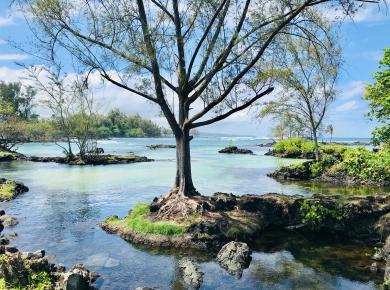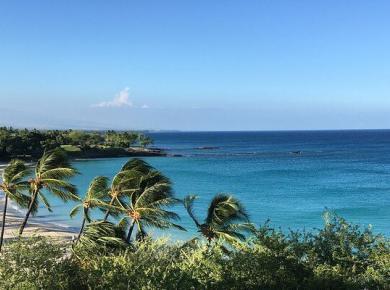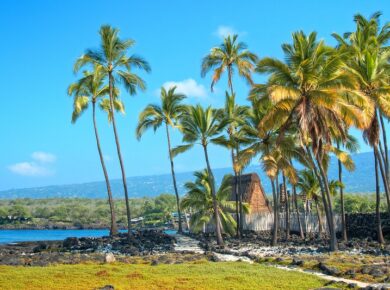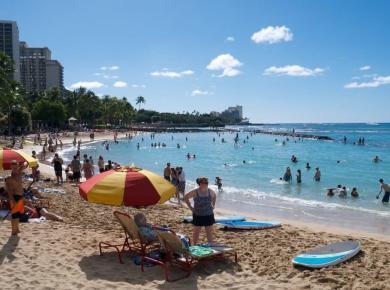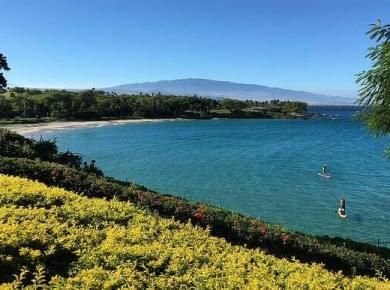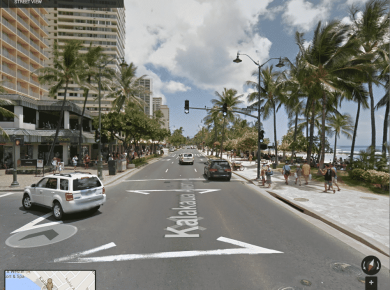
We are frequently asked about when is the best time to see lava in Hawaii. There are multiple answers a question like that, which appears to be a simple question on the surface. Today, we’re going to help you understand more about the best ways and time to see lava.
1. The lava/volcano must be active in order to see active lava.
Currently, the only volcano in Hawaii that has been actively erupting is Kilauea. This volcano is located primarily within Hawaii Volcanoes National Park on Hawaii (Big) Island. (For more information on the active and dormant volcanoes in Hawaii, see this link.)
Kilauea has been quite active with very few pauses since 1983, which makes it one of the most active volcanoes on earth! Even though Kilauea has been very active in recent decades, it could slow down or cease volcanic activity at any time. In fact, it did take a two year eruption pause from September 2018 to December 2020. In Kilauea’s documented lifetime since 1750, it has gone through other quiet periods. (See this Wikipedia page for Kilauea for more background.)
Some people assume there are “seasons” to volcanoes. We’ve been asked if certain months are good for lava viewing. There is no seasonality to volcanoes. There is no month that’s typically better than another for lava viewing. Volcano activity is driven by subterranean movement and is unaffected by our seasons. In terms of the weather being pleasant enough to be outside for lava viewing, you can be outdoors year-round for lava viewing in Hawaii. (Note that at the higher elevations of Hawaii Volcanoes National Park, you will probably want to wear a jacket.)

2. Lava activity must be accessible in order to observe it.
The location and level of Kilauea’s volcano activity is unpredictable. When you visit, lava might be easy to see or it might not. Since first visiting Hawaii (Big) Island in 2004, our lava viewing has ranged from basically impossible to see on foot to dramatic lava flows within a one-mile hike — and everything in between. Sometimes the only way to see the lava activity is by helicopter.
It’s impossible to know for sure where the lava will be active and visible next week or next month or anytime in the future. You can somewhat guess or hope that the lava will be active in its current locations within the next day or so, but that’s certainly not a given.As an example, in March 2017, we got to bike and hike to surface lava flows on the plain and to an ocean entry viewing point. To us, we had finally hit the volcano jackpot! It was spectacular. Within about a week or so, the lava flows that we observed stopped flowing.
As you research lava activity online, be careful as you read forums about where and how to see lava activity. Oftentimes, that information is out of date.
See our where to find lava page to find out where the volcano is active. Also check in with the park rangers at the visitors center of Hawaii Volcanoes National Park where they can give you more detailed advice on that particular day.
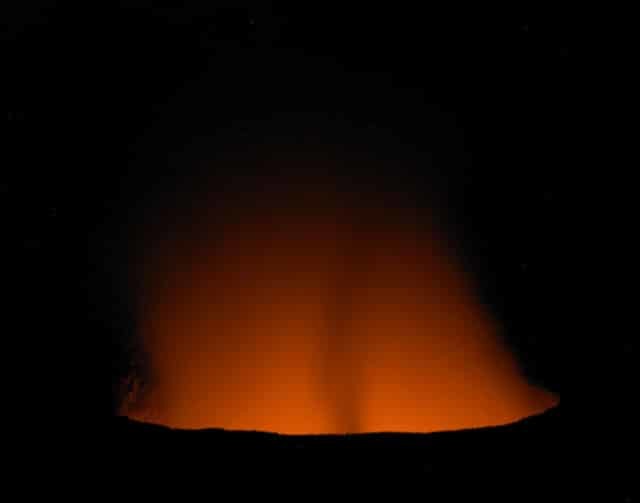
3. Ideal lava viewing times are during the three Ds – dusk, dark and dawn.
The bright colors and glows of lava are much more visible while the sun is down. This point is particularly important if the lava viewing is accessible from a distance.
The following photo collection illustrates what a difference nighttime viewing is compared to daytime viewing. The top level of photos compares Halemaumau during the day and at night. The lower level of photos compares the same viewing point of lava flowing into the ocean in the day versus at dusk.

The photos do a good job illustrating the difference, but when you see it for yourself, it’s even more dramatic.
—
We hope that when you go to Hawaii Island, that you will get to see lava activity. If you’re going, see our related article – Advice for viewing lava on the Big Island – with tips on what to wear and bring.

